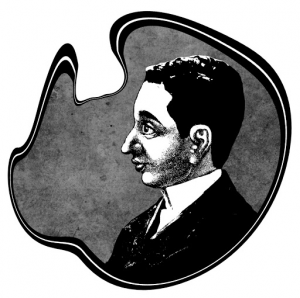Welcome to the Lightning Room, where DeWitt Brinson & Simon Jacobs take turns asking PANK authors extremely difficult questions about their work. Russell Jaffe’s sly, watery end of all things, “Doritos,” appeared in our April issue. He and Simon chat, below.
1. Hi Russell. If this is “after Cassandra Gillig,” can I ask what came before? Or after, assuming that the world was re-populated?
It’s after her because she suggested the idea for it! I do love the idea of a post-Cassandra-Gillig-world (PCGW).
Never assume anything about repopulation.
2. This piece is basically two people floating on a boat in the middle of watery nothingness, where all entertainment and civilization have been utterly wiped out. If you’re in love with the last viable person on earth, how do you deal with rejection?
I think that’s what real rejection feels like, at least in my life, be it romantic or job-related. Let me tell you, I once dreamed of working for the WWE as a creative writer. And I had an interview with them to be a content writer for the website! And I gave them some rad ideas and they had me sign a form that just because I had given them any ideas did NOT mean I could keep them or copyright them or that they hadn’t come up with them themselves. Then they USED ALL MY IDEAS ON THE WEBSITE, right down to a series about specific wacky pro wrestler gimmicks of the past and more interactive Facebook-page-like wrestler profile pages. And they told me they had just let 5 people go, which was true. The economy had just tanked. I felt like I was basically the last man in a barren landscape. I cried sitting on my car in Stamford, Connecticut, by a big thing of water and all these big white houses. It was like I had slept and this flood had killed everyone and devastated everything. Dealing with rejection is every step you take and breath you inhale and exhale. You just do it by continuing. Next thing you know, you’re like, fuck, I would have hated that job. I would have hated that relationship.
3. “Doritos” basically reads as optimism: crushed. Is it hard to be cheery when the (your) world is ending?
It’s not because I love the end of the world so much that it’s usually a positive thing for me. It’s a beautiful finale, and this poem is a particularly memorable part of the episodic series we’re all gifted by the universe whose narrative we kind of scrape together and determine day to day, maybe second to second. I can’t write anything if I feel sad, even brutally sad stuff. I feel like the sicker and sadder my poetry is, the happier I am IRL. Continue reading
![[PANK]](https://pankmagazine.com/wp-content/themes/pank/assets/images/pank-logo-large.png)

